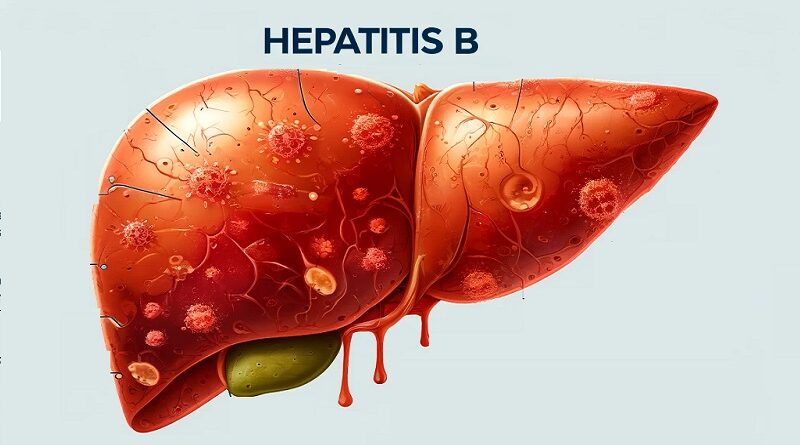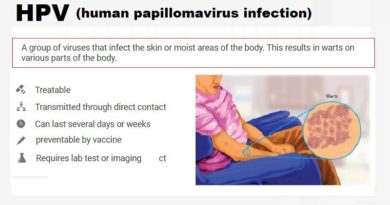Understanding Hepatitis B: A Comprehensive Guide for HepaB Virus infection
What is the Hepatitis B Virus?
Hepatitis B Virus (HBV) causes an infection that primarily affects the liver. It is a highly infectious agent that can lead to both acute and chronic liver disease. The liver is an essential organ responsible for many vital functions including detoxifying harmful substances, metabolizing nutrients, and producing proteins necessary for blood clotting. It becomes inflamed when infected by HBV. This inflammation can lead to severe complications if not managed properly, including cirrhosis, liver failure, or even liver cancer.
Hepatitis B affects approximately 296 million people globally, with the highest prevalence in sub-Saharan Africa and East Asia. Around 1 million people die each year due to complications like liver cancer and cirrhosis. Despite the availability of vaccines, many regions still face high rates of chronic infection due to limited access to healthcare and vaccination programs.
A Viral Infection Affecting the Liver
Hepatitis B targets the liver and leads to the inflammation of liver cells. The infection is acute and short-lived, in most of the cases, as the body’s immune system fights it off. However, in some individuals, particularly those infected during infancy or early childhood, the infection can become chronic, lasting a lifetime. Chronic hepatitis B can cause irreversible damage to the liver, leading to cirrhosis (scarring of the liver tissue) or hepatocellular carcinoma (liver cancer).
Symptoms of Hepatitis B
One of the most challenging aspects of hepatitis B is that it often shows no symptoms in the early stages. This means that many people are infected with the virus without even knowing it. The silent nature of the virus contributes to its spread, as individuals can unknowingly infect others.
Early Stage Symptoms (Acute Hepatitis B)
In many cases, particularly with acute hepatitis B infections, people experience mild or no symptoms at all. If there are symptoms, they usually emerge within one to four months after exposure to the virus. The early symptoms of hepatitis B can be mistaken for a flu-like illness. They include:
- Fever (a mild to moderate fever), is common in the early stages of infection.
- Fatigue: Extreme tiredness and a general feeling of weakness are typical. People infected with hepatitis B often feel unusually drained even with light physical activity.
- Nausea and Vomiting, gastrointestinal discomfort, including nausea and vomiting. This can be accompanied by a loss of appetite, leading to weight loss.
- Joint Pain: Some individuals experience joint pain, especially in larger joints like the knees, hips, or elbows.
Advanced Symptoms (Chronic Hepatitis B)
As the disease progresses or becomes more severe, particularly in cases of chronic infection, symptoms can worsen. In these cases, additional symptoms can include:
- Jaundice is one of the hallmark signs of hepatitis B, a condition where the skin and whites of the eyes turn yellow. This occurs because the liver is unable to process bilirubin, a yellow pigment found in bile.
- Dark Urine resembling the color of tea or cola, as a result of liver dysfunction.
- Light-Colored Stool: The liver’s role in producing bile can be affected, leading to pale or clay-colored stools.
- Abdominal Pain in the upper right part of the abdomen, where the liver is located.
- Swelling in the Legs and Abdomen: Fluid retention in the abdomen (ascites) and legs is a symptom of advanced liver disease, often indicating cirrhosis.
Transmission of Hepatitis B
Hepatitis B is transmitted through contact with infectious blood, semen, and other body fluids. It is much more contagious than HIV, but the risk of transmission can be reduced with proper precautions and awareness. There are several ways that the virus can be spread:
1- Blood Transfusions (Less Common Now)
In the past, one of the most common ways to contract hepatitis B was through blood transfusions. However, due to rigorous screening processes and testing of blood donors, this route of transmission has become much less common in developed countries. Blood banks now routinely test for HBV, among other infections, making transfusions a much safer procedure.
2- Sharing Needles or Syringes
One of the most significant risks of hepatitis B transmission is through the sharing of needles or syringes. This is particularly prevalent among people who use intravenous drugs. The virus can easily be spread when drug users share contaminated needles, syringes, or other injecting equipment.
3- Unprotected Sex
Hepatitis B is considered a sexually transmitted infection (STI) because it can be passed from one person to another during unprotected sex. The virus can be transmitted through vaginal fluids, semen, or blood. Engaging in unprotected sex with an infected person greatly increases the risk of acquiring the virus.
4- Mother to Baby During Birth
An infected mother can infect her baby during childbirth. This is known as perinatal transmission. Babies born to mothers with hepatitis B are at a very high risk of developing chronic HBV infection. But, with proper medical intervention and vaccination shortly after birth, the risk can be significantly reduced.
Diagnosis of Hepatitis B Virus Infection
Diagnosing involves a series of blood tests that detect the presence of the virus and provide information about the stage of the infection. Early diagnosis is crucial, especially for those at high risk of developing chronic hepatitis B.
Blood Tests for Hepatitis B
Blood tests are commonly used to diagnose hepatitis B, including:
- HBsAg (Hepatitis B surface antigen) detects the presence of the virus in the blood and indicates an active infection. If the HBsAg test is positive, it means the person is infected and can spread the virus to others.
- Anti-HBc (Hepatitis B core antibody): This test determines whether a person has been exposed to HBV. It indicates a past or ongoing infection.
- HBeAg (Hepatitis B e antigen) helps assess how actively the virus is replicating in the liver. A positive result suggests high levels of viral replication and an increased risk of transmission.
Additionally, tests for liver functions are useful to assess the extent of liver damage caused by the infection.
Treatment of Hepatitis B
While there is no cure for hepatitis B, several treatment options are available to manage the infection and prevent complications. The goal of treatment is to suppress the virus, prevent liver damage, and reduce the risk of progression to cirrhosis or liver cancer.
1- Antiviral Medications
For individuals with chronic hepatitis B, antiviral medications are the most common form of treatment. These medications work by reducing the amount of virus in the body, slowing the progression of the disease, and minimizing liver damage. Common antiviral drugs used for hepatitis B treatment include:
- Tenofovir: This medication is often prescribed to prevent the virus from replicating and causing further liver damage.
- Entecavir: Another effective antiviral drug that helps lower the viral load and improve liver functions.
- Pegylated Interferon: This is an injectable medication that boosts the immune system to fight the virus. It is often used in younger patients and those with less advanced liver disease.
The choice of medication depends on several factors, including the stage of the disease, the patient’s age, and the presence of any other health conditions.
2- Lifestyle Changes
Lifestyle changes, with medical treatment, can play an important role in managing hepatitis B. These changes can help reduce stress on the liver and improve overall health:
- Avoid Alcohol: Alcohol can accelerate liver damage, especially in individuals with hepatitis B. It is recommended to avoid alcohol entirely to prevent further complications.
- Vaccination: While the hepatitis B vaccine is most effective when given before exposure to the virus, those who are already infected can still benefit from vaccination to prevent coinfection with other types of hepatitis, like hepatitis A.
Prevention of Hepatitis B
Preventing hepatitis B is essential for protecting both individuals and the broader community from the spread of the virus. Fortunately, there are several highly effective ways to prevent hepatitis B infection.
Hepatitis B Vaccine: A Game Changer
One of the most significant advancements in public health has been the development of the hepatitis B vaccine. Introduced in the 1980s, the vaccine has proven to be highly effective in preventing hepatitis B infection. In countries where the vaccine is administered to all infants and at-risk populations, the prevalence of hepatitis B has dramatically decreased.
How the Vaccine Works
The hepatitis B vaccine contains a small, harmless piece of the hepatitis B virus, which stimulates the immune system to produce antibodies. These antibodies help the body recognize and fight the actual virus if exposed in the future. The vaccine provides long-term immunity, and in most cases, people who are fully vaccinated will be protected for life.
For the vaccine to be effective, it must be administered in a series of doses. The standard vaccination schedule consists of three doses:
- First dose: Administered at birth or at the first opportunity.
- Second dose: Given one month after the first dose.
- Third dose: Administered five months after the second dose.
In some cases, especially in high-risk populations, an accelerated schedule may be used, or additional doses may be recommended.
Who Should Get Vaccinated?
- Infants and Children: All newborns should receive the hepatitis B vaccine within 24 hours of birth. In regions with high rates of hepatitis B, vaccinating infants is critical to reducing perinatal transmission. Children and adolescents who have not been vaccinated should also receive the vaccine.
- Healthcare Workers: Individuals working in healthcare or in settings where they may be exposed to blood or bodily fluids are at an increased risk of hepatitis B infection. Vaccination is strongly recommended for all healthcare workers, including doctors, nurses, and support staff.
- People with Multiple Sexual Partners: Engaging in unprotected sex with multiple partners increases the likelihood of exposure to the virus. The vaccine is recommended for individuals in high-risk sexual behaviors or relationships.
- Individuals with Chronic Conditions: People living with chronic liver disease, kidney disease, or other long-term health conditions are more vulnerable to the complications of hepatitis B and should be vaccinated.
- Travelers to High-Risk Areas: Travelers to regions with a high prevalence of hepatitis B should consider vaccination before departure, especially if they plan to stay for an extended period or engage in activities that could increase their risk of exposure.
Safe Sex Practices
Using condoms during sexual intercourse can significantly reduce the risk of contracting hepatitis B. It is essential to practice safe sex, especially if you or your partner are not vaccinated or are unsure of your hepatitis B status.
SUMMARY
Hepatitis B is a serious viral infection that affects millions of people worldwide. While it can lead to life-threatening liver complications, early diagnosis, treatment, and preventive measures can help manage the disease and reduce the risk of severe outcomes. Understanding the nature of the virus, how it spreads, and the importance of prevention are crucial steps in controlling hepatitis B and its impact on public health.
Discover more from Helal Medical Manila
Subscribe to get the latest posts sent to your email.




